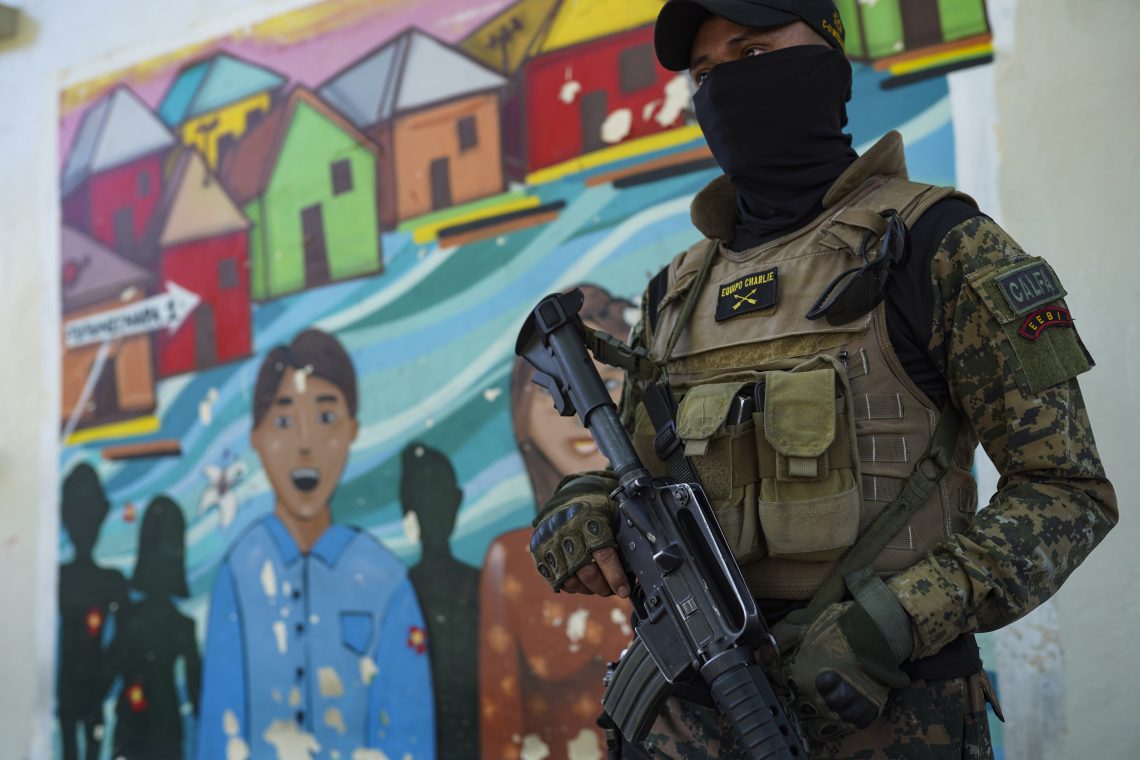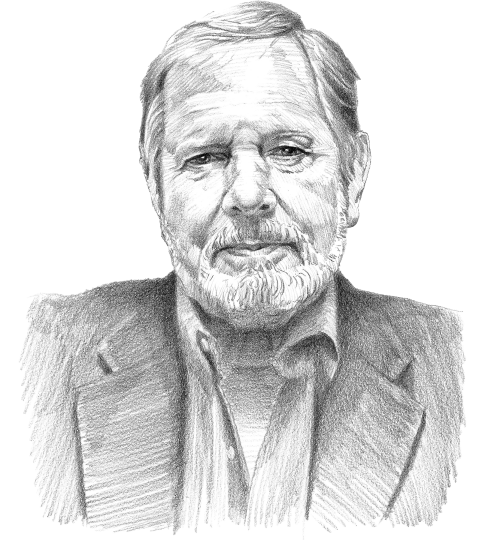Models for fighting crime in Latin America and the Caribbean
Why has the hard-line approach to gang violence failed in Jamaica, but succeeded in El Salvador? A closer look reveals the fraught complexity of local realities.

In a nutshell
- Gang violence has become an existential threat in the Caribbean and Central America
- Jamaica and El Salvador have both opted for a strict stance on crime
- At the heart of the problem is the region’s role in the global drug trade
The global community is deeply concerned about the near collapse of Haiti, especially because of the role that criminal gangs and their political associates have played. While most Caribbean nations have not reached Haiti’s desperate situation, an overwhelming surge in crime troubles them all.
Throughout the Caribbean and Central America, there is a growing recognition of the persistent threat from criminal activities. Even with enhanced efforts of coast guards from the United States, the United Kingdom, France and the Netherlands, control over the Caribbean Sea’s criminal activities remains elusive. Like the well-publicized war on drugs waged by several American administrations, few local strategies have shown promise.
In the Caribbean, only Jamaica has rolled out a specific crime prevention strategy – but one that, unfortunately, has not proven very effective. In Central America, few proactive measures have been taken, with the exception of the “Bukele model” in El Salvador.
Facts & figures
Much can be learned about fighting crime in the region by looking at the Jamaican and Salvadoran cases. First, effective policies have to originate locally and respect local realities. Second, it is difficult, if not impossible, to transfer models from one country to another, even when they share very similar problems. Third, just because a problem is accurately identified does not mean it can be easily resolved.
Jamaica and El Salvador are facing the consequences of a systemic issue: the global international narcotics trade amounted to $300 billion in 2022. The two countries’ struggle in fighting the resulting violence illustrates the persistence and intractability of the problem.
The Jamaican case
Democracy has prospered in Jamaica since its independence in 1962. But that has not stopped criminal organizations from penetrating the country’s political parties, and becoming deeply embedded into the economy through established, mutually supportive relationships with legitimate business. As a result, breaking the crime-politics nexus is still out of Jamaica’s reach.
After 17 democratic elections and the institutionalization of parliamentary politics, Jamaica still has multiple criminal gangs governing so-called “garrison communities.” The gangs ply the region with marijuana and guns, while the urban elites launder the money. This criminal activity provides between 14 and 20 percent of the island’s gross domestic product (GDP), on par with the 20 percent of GDP generated by remittances.
Facts & figures
Only when criminality spills out of the garrisons does the state intervene. These interventions are especially brutal, with journalist Ioan Grillo describing Jamaican constabulary units as “one of the most homicidal police forces in the world.”
The approach has not led to a reduction in crime. Jamaica consistently ranks as one of the most violent countries in the world.
Facts & figures
Crime garrisons in Jamaica
A “garrison” in the Jamaican context refers to a politically affiliated urban area where the local community is under the influence or control of organized criminal gangs.
The phenomenon began in the 1960s and 1970s. Initially, politicians provided resources to certain communities in exchange for political support and loyalty, often weaponizing these communities against rival political factions.
Over time, some garrisons have become strongly associated with one of Jamaica’s two major political parties: the Jamaica Labour Party (JLP) or the People’s National Party (PNP). These associations lead to violence, especially during election periods.
The leaders of these communities are often referred to as “dons.” Dons often exert more influence in their communities than formal institutions or law enforcement. They provide services, protection and sometimes employment in their territories.
Garrisons have been associated with a high rate of crime and violence, including gang warfare. Their existence has contributed to Jamaica having one of the highest homicide rates in the world.
The case of El Salvador
Twelve years of civil war (1979-1992) in El Salvador led to the flight of many young men to California, especially Los Angeles. Later, many of them were deported back to their home country as hardened criminals. This led to the formation of two major gangs: the Mara Salvatrucha (MS-13) and the smaller Barrio 18.
The gangs are active in most urban areas. With membership calculated at 86,000 from a population of 6.6 million, they initially specialized in extorting money from the working class. Subsequently they moved into the drug trade. In 2017 it was estimated that their share of the economy was $756 million, equal to 3 percent of the country’s GDP. They once seemed completely above the law, especially given their military apparatus of 25,000 men.
But this changed in 2019, when Nayib Bukele became president and his party, Nuevas Ideas, gained control of the parliament. The new leader opted for a hard-line approach that saw over 70,000 incarcerated, along with mass trials and long-term convictions. Amnesty International, Human Rights Watch and the United Nations Committee Against Torture have all criticized President Bukele’s policies.
But at home, the leader enjoys a 90 percent approval rating. His policy of mano dura (iron fist) with the gangs is winning him a fan club that will not stop growing. Polls show that El Salvador is the only Latin American country where a majority (76 percent) believes the government is governing positively for everyone. However, efforts to adopt the Bukele model elsewhere, including Honduras, have not yet succeeded. El Salvador and Honduras share a porous border, allowing gangs like the Mara Salvatrucha to expand their influence and dominate cities such as San Pedro Sula. Between 2010 and 2023, they reportedly killed 2,500 bus drivers who resisted them and extorted around $10 million. However, Honduras is five times larger in area than El Salvador, has 3 million more residents, a military half the size and struggles with deep-seated corruption within its powerful elite. Additionally, its 825 km-long Caribbean coastline and archipelago have become entrenched hubs for drug and arms trafficking.
Facts & figures
Mara Salvatrucha and Barrio 18 in El Salvador
Mara Salvatrucha (MS-13) originated in Los Angeles in the 1980s among Salvadoran immigrants fleeing civil war.
Barrio 18 has roots from the 1960s in the Pico-Union district of Los Angeles, initially as a Mexican-American gang. It expanded to include Central American members over time.
U.S. deportations in the 1990s and early 2000s sent many gang members back to El Salvador, a country unprepared to deal with the sudden influx of seasoned criminals.
Both gangs have carved out territories throughout El Salvador, leading to zones where they exert substantial influence and control. This territorial dominance often results in violent confrontations between the two gangs.
Both gangs are involved in a variety of illicit activities, including extortion, drug trafficking, human smuggling and assassinations.
“Rentas” or street-level extortion is a significant source of revenue, especially from local businesses and public transport operators.
Challenges specific to Latin America and the Caribbean
Comparing the Jamaican and El Salvador models does not conclude the quest for a solution. The region poses an intricate web of geopolitical challenges, particularly in relation to the unregulated coastlines on both the Atlantic and Pacific oceans. The Caribbean has over three hundred ports in multiple sovereign nations, each protective of their 12-mile territorial waters. These coastlines have been hubs for smuggling activities for centuries.
As in other parts of the world, pervasive corruption presents considerable obstacles. While this is a common issue worldwide, it particularly jeopardizes the stability of Caribbean and Central American nations, which are located at a strategically crucial junction of global drug routes. Unfortunately, as long as demand for the $300 billion drug market persists, reformers face an uphill battle, regardless of which strategy they pursue.
More by Anthony Maingot
Haiti’s incomplete nation-building
A reborn Dominican Republic?
The situation on the Pacific coast is even more complex. The recent assassinations of the major anti-mafia fighter in Ecuador, Fernando Villavicencio, of three policemen in Chile and the proven links with criminal gangs in Ecuador (Los Choneros) and in Chile (Los Gallegos), all demonstrate the reach of international organized crime.
A new model for fighting crime
There is an urgent search for a new crime-fighting model. Of foremost concern is the explosive spread of the Tren de Aragua criminal organization. With its origins in the Venezuelan state of Aragua, where they literally run the penitentiary, it has a base for international activities.
Nowhere is the quest more urgent than in the left-wing Chilean government of Gabriel Boric. The killing of policemen, the increase in drug traffic and the violence in the Southern Araucania have all forced President Boric to pivot towards tougher policies on crime. Crime is now, by far, the biggest worry among Chileans. It is no surprise that the Bukele model has been cited by many in Chile. Yet it is unlikely that a post-authoritarian country with a solid democracy would adopt a quasi-totalitarian system such as that of El Salvador. Nor are the criminal groups organized in Jamaican style garrisons. Rather, fully cognizant of the tentacles of Tren de Aragua – the number of its adherents is increasing, it has ties with the Calabrian Ndrangheta organized crime syndicate operating among the hundreds of thousands of Venezuelan exiles – the Boric government has decided to study the Italian anti-mafia strategy.
The Boric government, committed as it is to democracy and the rule of law, will have to balance that commitment with the people’s demand for mano dura policies. We can therefore expect a new model to add to the repertoire of crime-fighting options in the Western Hemisphere.
For industry-specific scenarios and bespoke geopolitical intelligence, contact us and we will provide you with more information about our advisory services.











